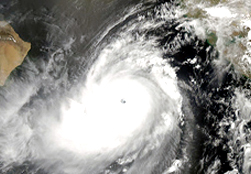Nigeria annual flood outlook 2024
The 2024 Flood Outlook report offers a comprehensive assessment of flood risk across the country, highlighting critical areas of concern and strategic recommendations for mitigation and preparedness. Through
The 2024 Flood Outlook report offers a comprehensive assessment of flood risk across the country, highlighting critical areas of concern and strategic recommendations for mitigation and preparedness. Through
Groundwater is a primary source of fresh water in many parts of the world. Some regions are becoming overly dependent on it, consuming groundwater faster than it is naturally replenished and causing water tables to decline unremittingly. Indirect evidence suggests that this is the case in northwest India, but there has been no regional assessment of the rate of groundwater depletion.
C.J. Punnathara
Kaustubh Kulkarni / Pune/mumbai/new Delhi August 11, 2009, 0:25 IST
The environmental implications of rainfall pattern in the recharge of groundwater system of Saharanpur regionl located in Uttar Pradesh, have been discussed. The mathematical analysis of rainfall variation of Saharanpur district for a period of 25 years (1982-2006) displays a fairly good range from 497.70 to 1566.10 mm with an annual average rainfall value of 1058.82 mm.
The rainfall is an important parameter for the well being of around 1000 million people of the Indian regions. However, certain extreme rainfall events occurring in different seasons cause disastrous situation over some parts.
With increasing concerns about climate change, the need to understand the nature and variability of monsoon climatic conditions and to evaluate possible future changes becomes increasingly important. This paper deals with the changes in frequency and magnitudes of extreme monsoon rainfall deficiency and excess in India from 1871 to 2005.

Arnab Pratim Dutta
The Niger Delta, located in the Atlantic Coast of southern Nigeria, is the second largest delta in the world. The region spans over 20,000 square kilometers hosting about 25% of the Nigerian population (from 2006 census, the total population of Nigeria is about 140 million people).
Meteorology isn

The response of the Arabian Sea to global warming is the disruption in the natural decadal cycle in the sea surface temperature (SST) after 1995, followed by a secular warming. The Arabian Sea is experiencing a regional climate-shift after 1995, which is accompanied by a five fold increase in the occurrence of